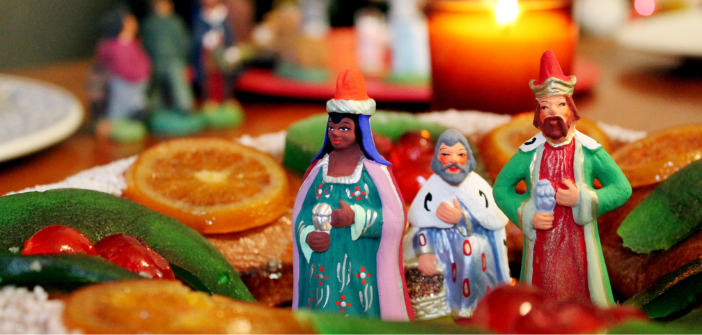After the yule log and Christmas turkey, Epiphany gives us another chance to start the year with a full belly.
This Thursday, January 6th, it’s the king cake that’s in the spotlight! On this date, we celebrate Epiphany, a Christian tradition that marks the arrival of the Magi in front of Jesus.
According to tradition, the Magi were three wise men, coming from different places, each bearing a symbolic gift for Jesus. It was thanks to the guiding star, often referred to as the Star of Bethlehem, that they were able to find the manger where Jesus was born. Melchior, representing Europe, supposedly gave gold to the young child, a symbol of royalty. Gaspar, from Asia, offered incense, symbolizing divinity. Finally, Balthazar, representing Africa, brought myrrh (an aromatic resin derived from the balsam tree).
Nevertheless, this beautiful legend only explains the origin of the celebration but not why we eat the king cake. In reality, the tradition of the king cake originates from the Roman Saturnalia (festivals held between the end of December and early January), during which the Romans would appoint a slave as the “king for a day.” To decide who would take on this role, they would use a bean hidden in a cake, drawing lots, so to speak. The king for the day had the power to fulfill all his desires for the day before being put to death or returning to his life of slavery.
To ensure the random distribution of portions, the youngest person would place themselves under the table and name the recipient of the designated portion. A custom still observed today.


